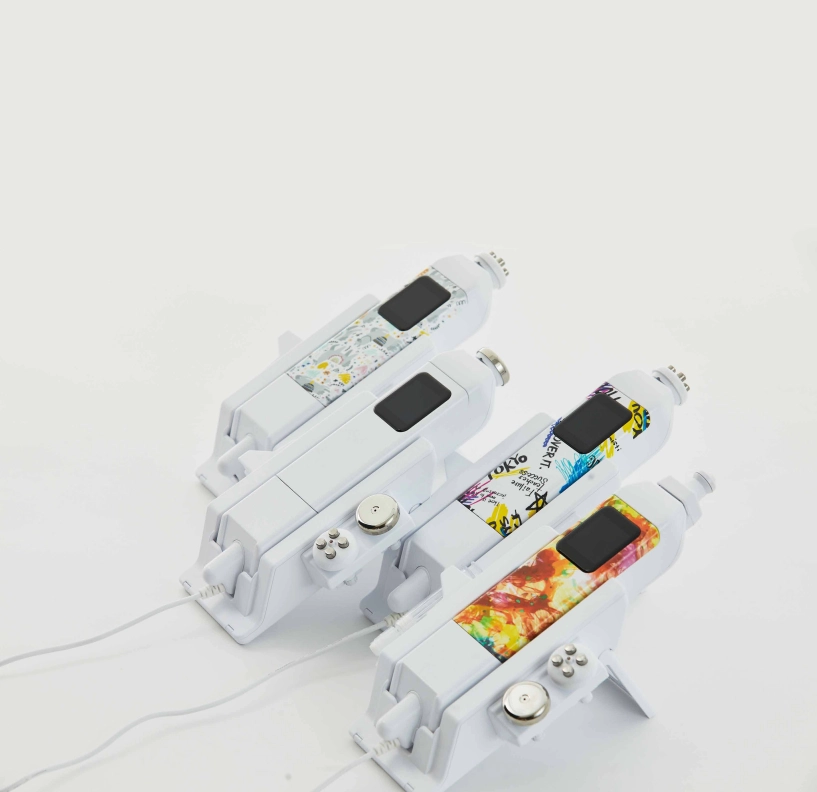Ultrasound Skin Tightening vs. Radiofrequency: Which Delivers the Best Results?
What Is Ultrasound Skin Tightening?
How Does Ultrasound Tighten Skin?
Ultrasound skin tightening functions by sending high-pitched sound waves deep into skin layers. It especially targets the SMAS (Superficial Muscular Aponeurotic System) layer. This layer is the same one surgeons adjust during facelifts. The warmth from ultrasound waves sparks collagen growth. This helps firm and raise the skin gradually.
Unlike surface fixes, ultrasound waves skip the outer skin. They work from inside instead. This triggers a natural repair process. That process leads to steady tissue shrinking and reshaping. The method is secure, potent, and yields lasting effects without surgery.
Does Ultrasound Skin Tightening Work?
Many studies and user stories prove ultrasound skin tightening boosts skin tightness and strength. Yet, outcomes differ. They depend on skin kind, age, and device quality. Younger folks might see gentle lifting. However, those with heavier sagging may need several rounds or mixed treatments for top results.
Ultrasound Frequency for Skin Tightening
Ultrasound skin care devices often use frequencies from 1MHz to 3MHz. Lower ones, like 1MHz, dive deeper. They’re great for lifting and firming. Higher ones, such as 3MHz, focus on shallower layers. These improve skin feel and shade. Safety matters a lot. Professional tools are built to send controlled energy. This prevents overheating or skin harm.
How Does Radiofrequency Compare for Skin Tightening?
Radiofrequency Technology Explained
Radiofrequency (RF) skin tightening creates heat via electric currents. It targets collagen strands in the dermis. This managed warmth reshapes collagen, boosting skin tightness and stretchiness. RF comes in types like monopolar, bipolar, and multipolar. Each has distinct uses and reach depths.
Ultrasound vs. Radiofrequency: Key Differences
A major difference between ultrasound and radiofrequency is penetration depth. Ultrasound hits deeper layers like the SMAS. RF mainly works on the dermis and outer skin. So, ultrasound suits deep lifting well. Meanwhile, RF excels at enhancing surface feel and light sagging. Also, ultrasound treatments usually need little recovery time. RF, though, might cause mild redness or puffiness.
Which Works Faster: Ultrasound or RF?
Radiofrequency gives quicker effects. It tightens existing collagen strands right away. However, ultrasound provides lasting perks. It sparks new collagen growth deep down. For a fast lift before an occasion, RF might be ideal. Yet, those wanting slow, natural gains may lean toward ultrasound skin therapy.

Ultrasound Skin Tightening Results and Benefits
How Does Ultrasound Benefit the Skin Beyond Tightening?
Beyond lifting and firming, ultrasound skin therapy enhances the skin in many ways. It boosts blood flow and raises oxygen levels. Plus, it aids deeper entry of skin products via phonophoresis. This makes it a handy tool for overall skin renewal. It helps lessen fine creases, lines, and uneven patches too.
Realistic Expectations for Ultrasound Skin Tightening Results
Collagen reshaping takes time. So, visible gains from ultrasound treatments show up in 4 to 12 weeks. The skin slowly gets tighter and more raised. Improvements keep growing over months. To keep these effects, regular follow-ups might be suggested.
Choosing the Best Ultrasound Skin Tightening Machine
Key Features of Professional-Grade Devices
When picking the best ultrasound skin tightening machine, certain traits matter. Look for adjustable frequencies and heat control. FDA or CE approval is key too. Top-tier devices deliver exact energy. This ensures both potency and safety for ongoing use.
At-Home vs. Clinic Devices: Pros and Cons
At-home ultrasound skin care devices bring ease and savings. But they might lack the strength of clinic tools. Handheld units work fine for upkeep. Still, clinic sessions often yield bolder outcomes due to higher power. The choice hinges on your funds and goals.
Spotlight on Multi-Functional Solutions

For those after a flexible tool, Anchorfree mini-synergy+ handheld multi-functional beauty equipment stands out. It blends ultrasound, RF, and other skin-boosting tech. This smart device lets users enjoy pro-level effects at home.
Radiofrequency vs. Ultrasound for Skin Tightening: Which Wins?
Combining Technologies for Enhanced Results
Many skin experts suggest mixing RF and ultrasound for top skin tightening results. RF tackles surface layers to smooth texture and lift collagen. Meanwhile, ultrasound dives deeper for lasting lift. This paired method can yield fuller gains in skin firmness and stretchiness.
Cost and Accessibility Comparison
On average, pro ultrasound skin tightening sessions cost $300 to $1,500 each. RF sessions range from $200 to $800. In-office treatments bring strong effects. Yet, buying an at-home ultrasound skin tightening device can save money over time for skin care.
FAQs About Skin Tightening Technologies
Does ultrasound skin tightening work on all skin types?
Ultrasound treatments suit most skin kinds broadly. But those with very loose skin might need extra sessions for clear gains.
How many ultrasound sessions are needed for visible results?
Most see progress after one round. Still, 3 to 6 sessions, spaced four weeks apart, are often advised for best outcomes.
Is radiofrequency safer than ultrasound for sensitive skin?
Both methods are safe when used right. However, RF might cause brief redness. Ultrasound often suits sensitive skin better.
Can ultrasound and RF be used together in one treatment?
Yes, many clinics offer mixed treatments to boost skin tightening effects. Ultrasound lifts deeper layers. RF polishes surface feel.
Final Verdict and Next Steps
Which Technology Is Right for You?
Deciding between ultrasound and radiofrequency rests on your skin aims. If you seek deep lifting and collagen renewal, ultrasound fits best. For quick tightening and texture polish, RF might suit more. For top results, think about blending both.
Exploring Advanced Custom Solutions
For an all-in-one fix, Anchorfree mini-synergy+ handheld multi-functional beauty equipment offers tailored care. It uses ultrasound, RF, EMS, and vibration tech. Its smart features tackle sagging, creases, and skin moisture. This delivers pro-level effects at home.
Ready to gain firmer, youthful skin? Dive into cutting-edge ultrasound and radiofrequency tech. Contact us today for tailored skin solutions!








